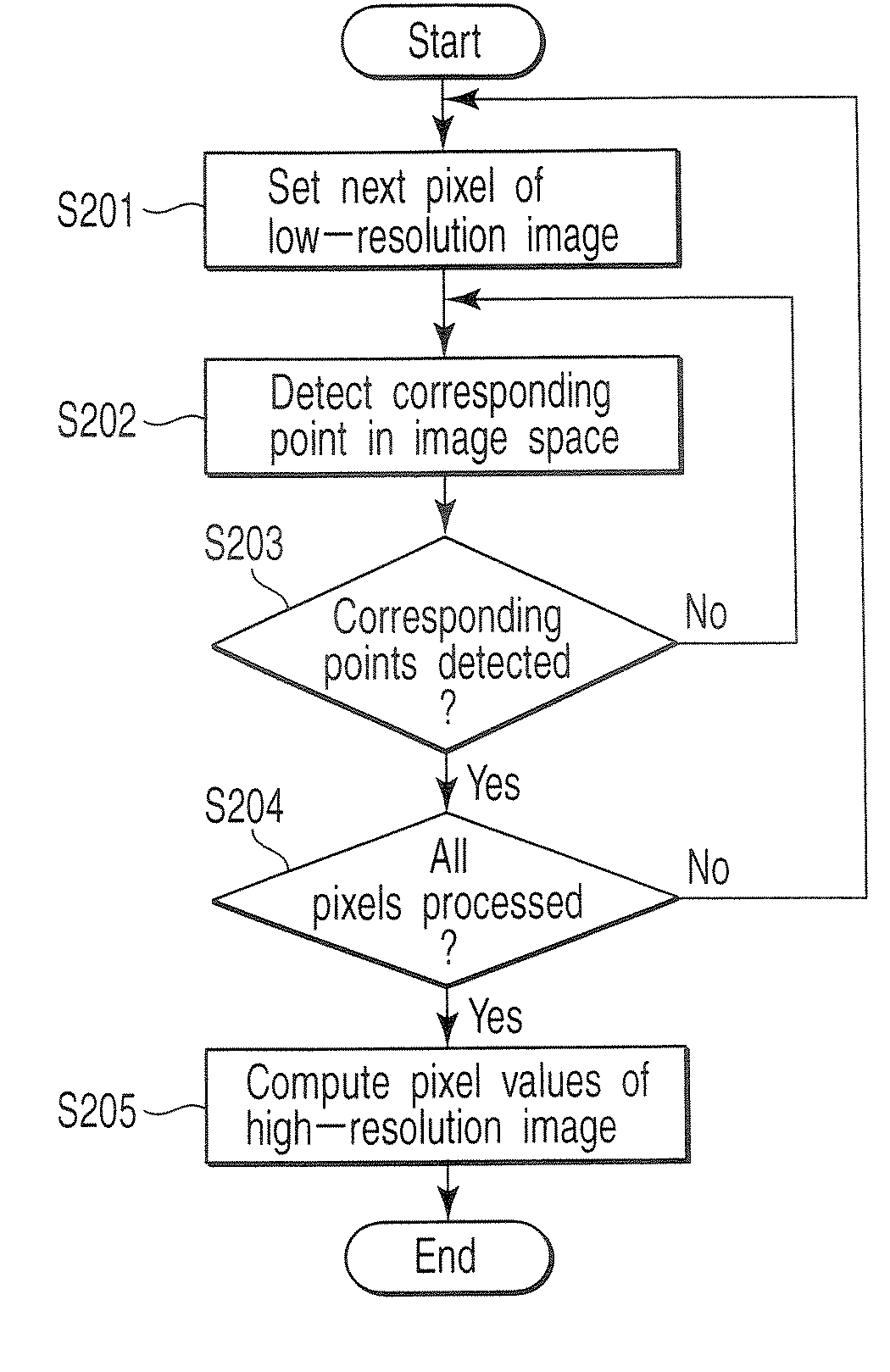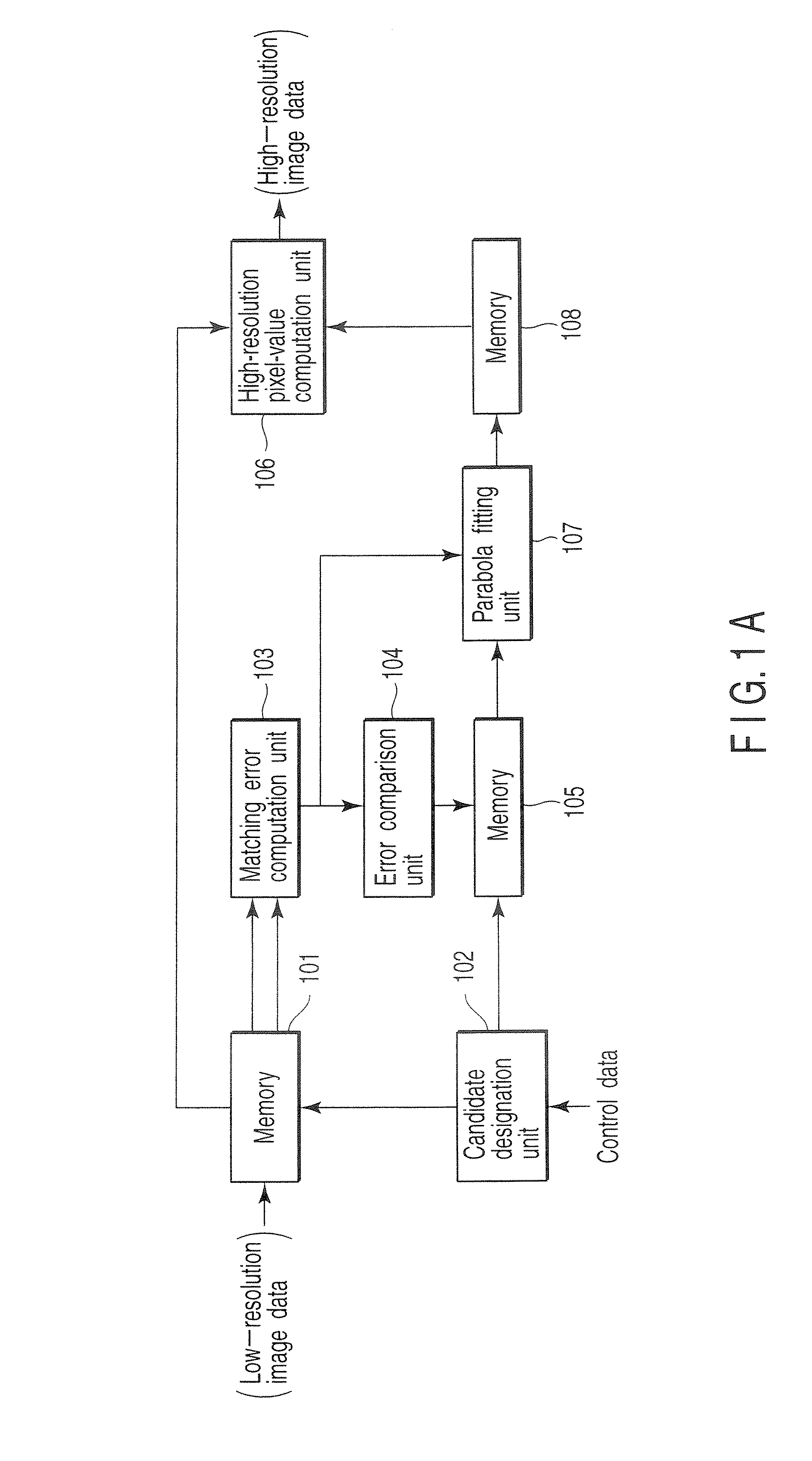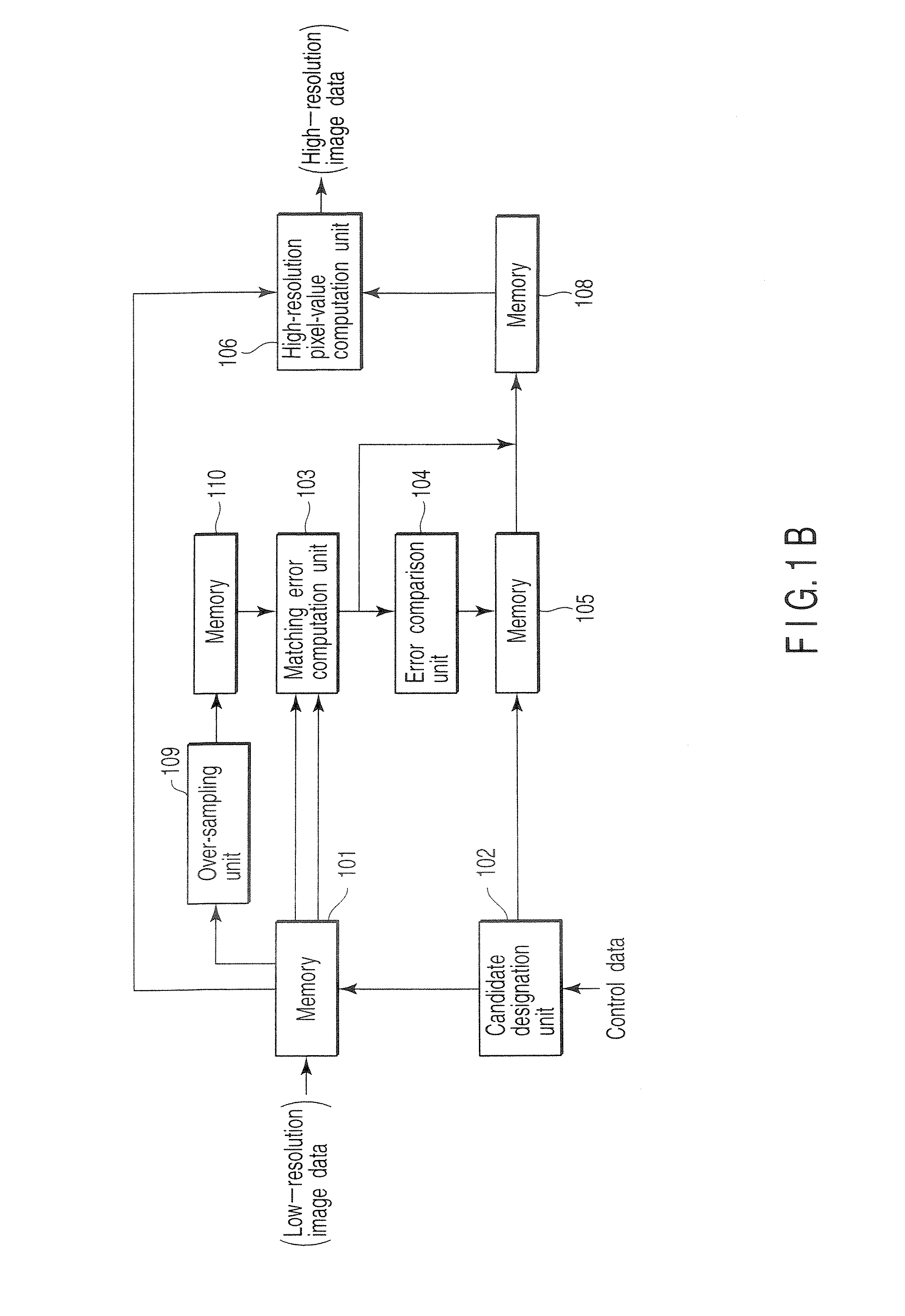High resolution enabling apparatus and method
- Summary
- Abstract
- Description
- Claims
- Application Information
AI Technical Summary
Benefits of technology
Problems solved by technology
Method used
Image
Examples
first embodiment
[0094]Referring now to FIG. 2, an operation example of the high-resolution enabling apparatus according to the embodiments will be described. Images may hereinafter be called frames.
[0095]At step S201, the candidate designation unit 102 sets, as target pixels, pixels in a low-resolution image in a preset order. In the case of a still image, a so-called raster order, for example, is employed, in which the target pixels are successively selected by rightward scanning horizontal pixel lines in the order beginning with the upper left pixel and ending with the lower right pixel. In the case of a moving image, frames are successively selected, and the pixels in each frame are selected in the above-mentioned raster order. The relationship between the low-resolution frame and high-resolution frame of a moving image will be described later with reference to FIGS. 3 to 8.
[0096]At step S202, the matching error computation unit 103, error comparison unit 104 and parabola fitting unit 107 detect...
second embodiment
[0175]Referring to FIGS. 50 to 58, a description will be given of a second embodiment in which local pattern autocorrelation is utilized.
[0176]FIG. 50 shows part of a still image or part of one frame of a moving image, which is input as low-resolution image 5006 for realizing high resolution. Black dots denote pixels. The hatched portion indicates a low-brightness portion, which contains edge 5007 extending from the lower left to the upper right. The edge indicates the boundary in brightness acquired before sampling and during photography. It is a matter of course that the pixels of low-resolution image 5006 exhibit only brightness. To reproduce the light and shade of edge 5007 as accurately as possible, samples values of a certain portion of a subject are acquired from different image frames of the subject in the conventional art. However, as described above referring to FIG. 17, five lines 5001 to 5005 enclosed by the broken lines in FIG. 50 should have very similar brightness cha...
third embodiment
[0198]Referring to FIGS. 59 and 60, a description will be given of a third embodiment in which when local pattern autocorrelation is utilized, blocks are used instead of lines.
[0199]As shown in FIG. 59, an image of (9×9) pixels is divided into blocks 5901 of (3×3) pixels, and one of the blocks 5901 is used as reference block 5902 in which points (corresponding points) corresponding to the pixels of the other blocks are determined.
[0200]Referring to the flowchart of FIG. 60, the operation of the third embodiment will be described.
[0201]At step S6001, an end block included in the blocks, into which the image space is divided, is set as a reference block subjected to first realization of high resolution. Then, the program proceeds to step S4801.
[0202]At step S4801, the number n assigned to a low-resolution block used for realizing high resolution of the set reference block is set to 1. Subsequently, the program proceeds to step S6002. In FIG. 59, block 5902 is set as the reference bloc...
PUM
 Login to View More
Login to View More Abstract
Description
Claims
Application Information
 Login to View More
Login to View More - R&D
- Intellectual Property
- Life Sciences
- Materials
- Tech Scout
- Unparalleled Data Quality
- Higher Quality Content
- 60% Fewer Hallucinations
Browse by: Latest US Patents, China's latest patents, Technical Efficacy Thesaurus, Application Domain, Technology Topic, Popular Technical Reports.
© 2025 PatSnap. All rights reserved.Legal|Privacy policy|Modern Slavery Act Transparency Statement|Sitemap|About US| Contact US: help@patsnap.com



